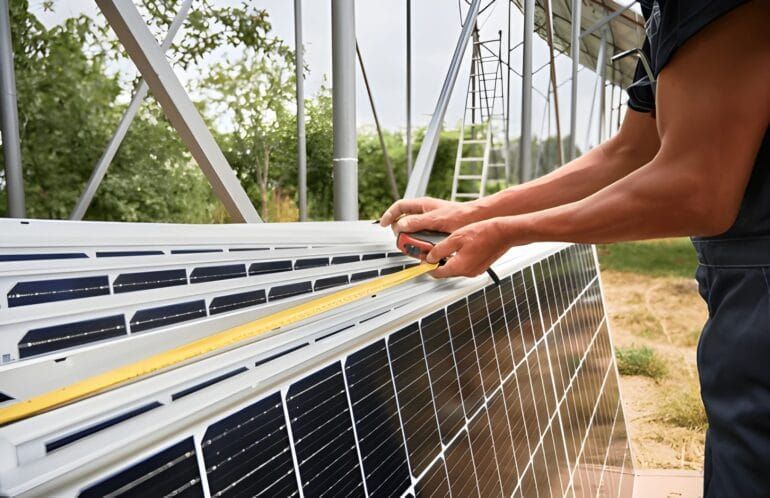The pandemic COVID-19 shocked the whole world. It had a massive impact on the economy. For months now, economies have struggled to keep up and stay alive. Governments created plans to Solar Planning Reforms and are now on their way to executing them to save different industries.
In Australia, there are new and modified laws and regulations. The intention is to help support the country so that it will be on its way to full recovery from the devastation caused by COVID-19. Part of the reform in Western Australia is focused on the Planning and Development Act 2005. The modified version is called the Planning and Development Amendment Bill 2020 (WA) or the PDA Bill.
This blog post addresses everything you may want to know about the Bill. Plus, how will it affect solar?
An Overview of the Planning and Development Act 2005
Before we talk about the modifications in the new Bill, it is essential to know what the existing Act is about.
The Planning and Development Act 2005 of the Western Australian Parliament lays down individual regulations over planning in local sites. It also establishes controls over the land subdivision. One of the Act’s purposes is to consolidate other Acts, particularly:
- Town Planning and Development Act 1928
- Western Australian Planning Commission Act 1985
- Metropolitan Region Town Planning Scheme Act 1959
Planning Reforms for COVID-19
Now, let us focus on the modified version. It remains a Bill because it has not been approved yet. However, due to the pandemic’s effects, the state’s economy is in dire need of assistance in any form. Lawmakers are rushing to have the amendments approved. It is, therefore, essential to understanding what the changes maybe once it is enacted.
The Planning and Development Amendment Bill was introduced on 20 May 2020. Honourable Rita Saffioti, the Minister for Transport and Planning spearheaded the primer on these changes.

Premier Mark McGowan released a joint media statement regarding the Bill where it was described to have major reforms. These modifications will serve to simplify the planning system across the state while boosting the economic recovery from the pandemic.
The announcement emphasised the broad objectives of the amendment in which the Bill will:
- Create planning reforms that have not been done historically, especially with the COVID-19 crisis going on
- Provide support for the economic recovery of the state
- Offer a once in a lifetime transition to the planning system of Western Australia
- Enact urgent legislation, which is the critical point of the Action Plan for Planning Reform Provide a package with over 25 key reform items
- Allow significant job creation while giving support for major projects and jobs using streamlined assessments
- Have reforms that promote a more straightforward and transparent system for planning and development
These amendments are based on three years of the government’s extensive consultation. They are now an urgent matter with authorities bringing these reforms forward to provide support during the pandemic. It is not just to create a more comprehensive economic response but to protect jobs and offer new opportunities to the citizens.
The Bill is only a portion of a series of reforms that are geared towards planning regulations and legislation. These amendments are intended to cut red tape, improve support for businesses, especially smaller ones, and to have a simplified planning system overall.
Under the proposed changes, the Planning Commission of the state will serve as the final arbiter for projects, which include:
- Development proposals that are estimated to cost at least $30 million
- Proposals for residential properties with at least 100 dwellings involved
- Commercial properties with 20,000 square metres (or more) of floor space intended for commercial transactions only
- Projects involving tourism which may not meet individual requirements, but help assist the economy from the pandemic’s impacts
Changes to regulations in planning, as well as policies across the state, will accompany the legislative reforms mentioned above. It expected that these reforms would be fully implemented by 2022.
The Department of Planning, Lands, and Heritage declared that these proposed amendments are created in conjunction with the State Government’s Action Plan on Planning Reform. They are designed to follow consultation regarding ways to remove barriers that exist. As a result, there will be greater clarity, and users will see consistency throughout the whole system. It may also be used to diminish the administrative burden on Western Australia’s 134 local governments.

What It Means for the Solar Industry
Western Australia continues to experience an increase in solar energy developments. They are growing in size and scale, which is why these planning reforms are appropriate for the solar industry. Questions regarding the suitability of land use and environmental impacts should be addressed. For instance, should solar panels be installed away from other land and homeowners?
WA receives plenty of sunlight and is, in fact, one of the sunniest landscapes on the entire planet. Naturally, rooftop solar power has become a choice for a significant number of dwellings. On the main grid of the state, which covers the highly populated southwest corner, including Perth, many homes already have solar panels. One of three houses has installed a solar system.
More installations may come as a result of the planning reforms. The main reason for this claim is that planning approval may be exempted from small residential projects once the Bill is executed. It means minor extensions, carports, pergolas, and even solar installations are relieved from planning approval requirements.
Meanwhile, for significant developments, including those that are around $30 million or more, they will receive a coordinated approach with the state and referral agencies. Commercial solar can be quite large and complex, which may also involve a considerable amount of paperwork. With the amendments, businesses can worry less about waiting time and document requirements. This way, they can use solar immediately and get back on their feet faster.
More importantly, the focus lies on well-designed buildings and spaces that common people use. These places are essential to Western Australians so that they can live, work, and recreate as they wish. The aim is to have a good design, rather than improve on appearance and style. It can be applied to solar systems in which the goal should be to enhance sustainability and create less impact on the environment.
With these efforts, local communities throughout the state will benefit, allowing a positive legacy to be left for future generations.
Frequently Asked Question
Q: What are the solar planning reforms set to take place in Western Australia in 2020?
A: In 2020, Western Australia introduced solar planning reforms aimed at streamlining the process of installing solar panels on residential properties. The reforms were implemented to encourage the uptake of solar energy and make it easier for homeowners to install solar panels.
Q: What is the goal of these solar planning reforms?
A: The goal of the solar planning reforms in Western Australia is to simplify and expedite the process of installing solar panels for residential properties. By reducing red tape and regulatory barriers, the reforms aim to make solar energy more accessible and encourage homeowners to embrace renewable energy.
Q: What changes were introduced through these reforms?
A: The specific changes introduced through the solar planning reforms in Western Australia include simplified application processes for small-scale solar installations, removal of planning approval requirements for certain types of solar systems, and clearer guidelines for solar panel installations on residential properties.
Q: How do these reforms benefit homeowners?
A: The solar planning reforms benefit homeowners by making the process of installing solar panels more streamlined and less bureaucratic. Homeowners can now navigate the application process more easily, saving time and effort. Additionally, the removal of planning approval requirements for certain systems reduces costs and administrative burdens for homeowners.
Q: Will these reforms affect the quality and safety standards of solar installations?
A: No, the reforms do not compromise the quality or safety standards of solar installations. While the application process has been simplified, the necessary safety requirements and compliance regulations remain in place. Installers are still required to follow industry standards to ensure the safe and reliable operation of solar panel systems.
Q: Are these reforms applicable to commercial or only residential properties?
A: The solar planning reforms primarily focus on residential properties in Western Australia. However, depending on the specific regulations and guidelines in place, some aspects of the reforms may also apply to commercial properties. It is advisable to consult with local authorities or solar installation professionals for information regarding commercial properties.
Q: How can homeowners stay informed about these solar planning reforms?
A: Homeowners can stay informed about the solar planning reforms in Western Australia through various channels. Local government websites, energy regulatory authorities, and solar industry associations often provide updates and resources related to solar energy policies and reforms. Engaging with reputable solar installation companies and professionals can also help homeowners stay up to date with the latest information.
Q: How do these solar planning reforms contribute to the promotion of renewable energy?
A: The solar planning reforms in Western Australia contribute to the promotion of renewable energy by removing barriers and making solar installations more accessible. By simplifying the process and reducing approval requirements, more homeowners are likely to consider installing solar panels. This increased adoption of solar energy helps reduce reliance on fossil fuels, lowers greenhouse gas emissions, and supports the transition towards a more sustainable and clean energy future.
Q: Do these reforms include any financial incentives or support for homeowners?
A: The solar planning reforms in Western Australia primarily focus on streamlining the installation process and reducing bureaucratic hurdles. While the reforms themselves do not include specific financial incentives, homeowners may still be eligible for existing solar incentives and rebates offered by the government or energy providers. These incentives, such as feed-in tariffs or solar rebates, can help offset the initial cost of installing solar panels and enhance the financial viability of the investment.







